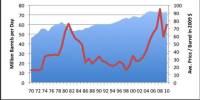Elasticity of demand for any commodity is determined by a number of factors which are explained below:
Nature of the commodity: The elasticity demand for any commodity depends upon the nature of the commodity, i.e., whether it is a necessity, comfort or luxury. Whereas the demand for the luxury goods is said to be highly elastic because even with a slight change in its price the demand changes significantly. But, however, the demand for the prestige goods is said to be inelastic, because people are ready to buy these commodities at any price, such as antiques, gems, stones, etc.
The demand for necessities of life is generally less elastic. The demand for comfortable goods like milk, fan, freeze, etc. is neither very elastic nor very inelastic demand because with the rise or fall in their prices, the demand for them decreases or increases moderately. On the other hand, the demand for luxuries goods is more elastic, because, with a small change in their prices, there is a large change in the demand.
Substitute: Commodities having substitutes have more elastic demand because with the change in the price of one commodity, the demand for its substitute is immediately affected. For example, if the price of coffee rises, assuming that price of tea remains constant, the demand for tea increases and vice-versa.
Goods having several uses: If a commodity has several uses, it has an elastic demand. For example, electricity has several uses. It is used for lighting, room heating, cooking, etc. if the tariffs of electricity increase, its uses will be restricted to important uses. On the other hand, if its tariffs decrease, it will be used for many uses like cooking, room heating etc.
Joint demand: There are certain commodities, which are jointly demanded such as car & petrol, pen & ink, bread and butter etc. The elasticity of demand of the second commodity depends upon the elasticity of demand of the major commodity. For example, if the demand for car is less elastic, the demand for petrol will also be less elastic.
Income of the consumer: The elasticity of demand also depends on income of the consumers is high; the elasticity of demand is less elastic. It is because change in the price will not affect the quantity demanded by a greater proportion. For high-income groups, the demand is said to be less elastic as the rise or fall in the price will not have much effect on the demand for a product. Whereas, in case of the low-income groups, the demand is said to be elastic and rise and fall in the price have a significant effect on the quantity demanded. Such as when the price falls the demand increases and vice-versa.
Postponed of the consumption: Those commodities whose consumption can be postponed will be elastic. For example, demand for constructing a house can be postponed. As a result, demand for bricks, cement, sand, etc. will be elastic on the other hand, goods whose demand cannot be postponed, their demand will be inelastic.
Habits: People who are habituated to the consumption of a particular commodity, like, coffee, tea; cigarette of a particular brand, the demand for it will be inelastic.
Price level: The price level also influence the elasticity of demand. When the price level is too high or too low, the demand will be comparatively inelastic but in case of middle range of price, demand is elastic.
Time factor: time factor plays an important role in influencing the elasticity of demand. The elasticity of demand is greater in the long run than in the short run because in long run the consumer has enough time to make adjustment in his scheme of consumption.
Information Source:
















